Choosing the crib your newborn will be sleeping in is one of the biggest decisions you’ll make as a new parent. For peace of mind, select a sturdy crib for your nursery that provides a secure space while they sleep. After all, it’s where your newborn spends most of their time during the first months. Up to 16 hours a day, in fact! So it’s essential this piece of furniture passes all safety standards with flying colors.
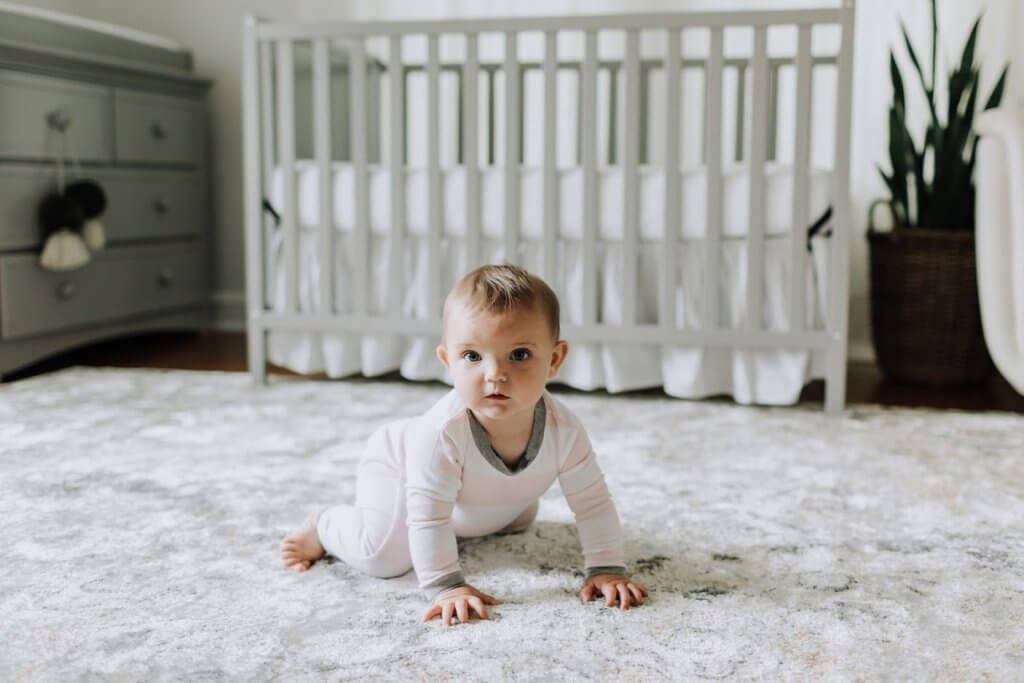
Finding the right crib requires safety knowledge and industry regulations. And choosing the best option that suits your needs and budget.
Safety Guidelines
Did you know that cribs are federally regulated? Your best bet for a baby crib is to buy new, since regulations from 2011 onward have become more stringent from the Consumer Product Safety Commission. This happened due to linked deaths from drop-side cribs over the years. These new standards enforce additional durability testing and warning labels so you’re kept well-informed as a consumer. You can also research certifications and safety through the Juvenile Products Manufacturers Association to find models and recent recalls.
Here’s what you need to look for in a safe crib:
Never Use an Old or Hand-Me-Down Crib
The hardware could be worn out, there could be lead paint (especially in older cribs and bassinets) or there might be pointy decorative elements that baby could get hurt on, or your clothes could snag—the list goes on. Don’t take the risk; your baby should feel safe while they sleep, and you should have the peace of mind to leave them there. If you’re unsure of a crib’s production date, by law, the shipping carton and crib need to have it clearly displayed. If you can’t see that it’s from 2011 onward, don’t use it.
Check for Safe Crib Standards
Get a ruler—crib slats should not exceed 2 3/8 inches apart. Also, the top of the crib rail should be 26 inches above the mattress (for adjustable mattresses, this can be lowered as your baby grows). This is to minimize the risk of falling out of the crib, especially for active babies.
Mattress Safety
Mattress safety. Ensure your baby’s mattress is firm and doesn’t sag or dip while they’re in it. Mattresses for baby cannot have any excess space around the sides or loose fabric sheets, or else your newborn could get stuck or suffocate on the excess. It’s highly recommended to buy your crib, mattress and sheet sets all at the same time so you’re 100% certain everything will fit snugly together. If you can fit more than two fingers between the mattress and the edge of the bed, it’s not a good fit.
Opt Out of Bumpers
There’s no substantial support from experts that bumpers help babies with additional safety, so don’t have this in the crib with them.
Wobble Test Your New Crib
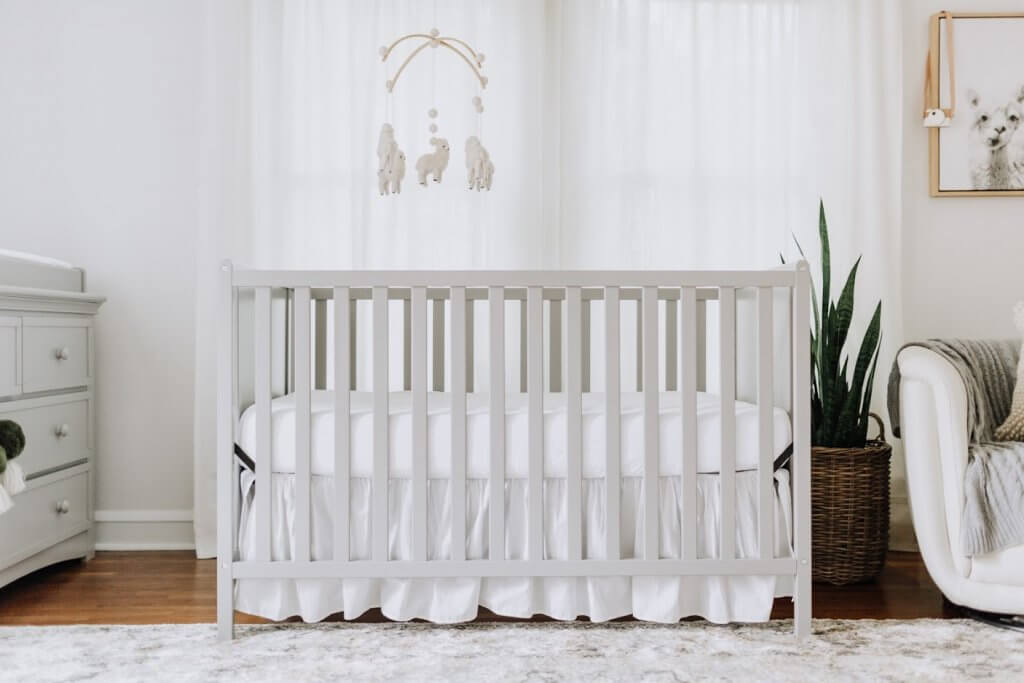
Once constructed, give your crib a good shake to make sure no parts jiggle or feel loose. If you hear anything rattling or feel something wiggle, you may have assembled something wrong. Most stores offer in-home delivery and assembly for an additional fee—if you can afford it, this is highly recommended to ensure baby’s crib is properly built.
Inspect for Any Defects
Look at all the crib parts for any protruding nails, screws or glue. Cracked or peeling paint also shouldn’t be anywhere on a brand new crib.
Lock the Wheels
Selecting a style with wheels can be extremely convenient, but make sure they are locked while your baby is resting. This is especially important on hardwood floors, so there’s no chance a sibling or pet could bump or move the crib.
Keep Away from Windows
Keep your crib a few feet away from windows, as they could get tangled in curtains or strings. Also, excessive sunlight can harm their skin and eyes, as your little one is still developing.
No Stuffed Animals or Blankets

Contrary to popular belief, your baby doesn’t need extra pillows or blankets for support. Plus, any stuffed toys or animals in the crib can help them escape out of the crib as they get older, so don’t make it a habit—even if it does look cuter in with them.
As you can tell, there’s a lot to consider when looking for a safe crib, so take the time to choose wisely! We know you’ll get the perfect fit for you and your newborn.
What Kind of Crib is Best?
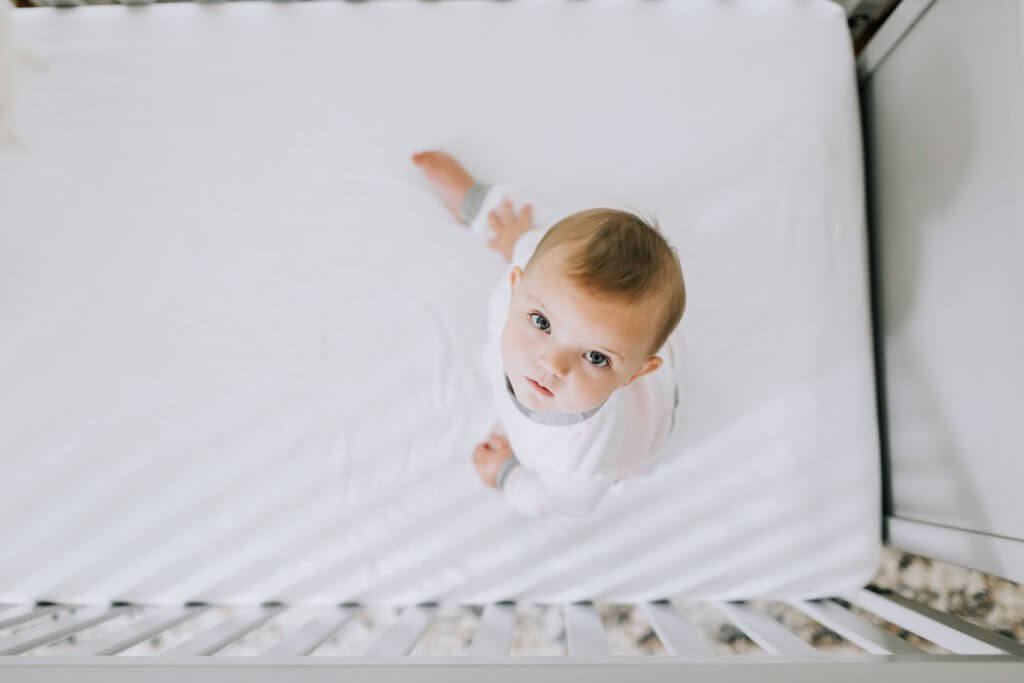
There are many different kinds of cribs—all high quality and safe—but it depends on your family’s needs and preferences.
Standard Cribs
Standard cribs are great if you have the space. Many of these full size frames have styles that allow for adjustable mattress heights as your baby grows, and the extra room lets them stretch out. Just be sure to assemble this crib in the desired room, as these are not usually easy to assemble and can be cumbersome to move once built.
Convertible Cribs
These are the perfect solve for a lifetime furniture investment. These models transform from a crib to a toddler bed to a daybed or full size bed for your child as they grow. This is a fantastic investment if you don’t want to worry about constantly buying them a new bedroom set as they get older, but it also requires you paying for and storing the other assembly parts upfront.
Portable Cribs
Portable cribs work well if you’re having to travel or live in a smaller space. Keep in mind, though, that your baby will quickly outgrow this and it may only be a temporary solution for their sleeping arrangements.
Multipurpose Cribs
This crib style integrates features such as a changing table or extra storage for added convenience. These can work well depending on the size of your nursery, but it’s something that’s quickly outgrown once baby becomes a toddler and a changing table is no longer necessary. The models can also be very bulky—so measure, measure, measure!
Round Cribs
Round cribs look beautiful and maintain a large sleeping surface for your baby. Space efficient and able to be placed anywhere (rather than just a corner of the room), these models lack harsh corners, which can be an added bonus for parents extra concerned about safety. That said, there aren’t as many options out there, and the limited selection also comes with a greater expense. Be sure you get a mattress and bed sheets that fit snug; you’ll want to do this while you’re buying the crib, as you may not be able to find it later!
Bassinets
Bassinets, while not cribs, are typically smaller and only good for the first few months of a baby’s life due to weight limits and restrictions. If you need an immediate solution, live in a smaller space or need portability throughout your home, this can be a viable option, but cribs are a better investment, as they last for much longer.
Additional Features to Look for:
Depending on how much you want to spend, cribs can have all the basic needs at $100 or be ultra sophisticated with Bluetooth operation. Some of these features are things to be mindful of when looking for your preferred crib:
- When shopping for a crib, check to see if that product is Greenguard Gold Certified. This means it has been thoroughly tested to meet safety standards that protect your baby from thousands of chemicals. Lean more here.
- Teething rails, which are plastic coverings that protect your crib against your baby’s gum mashing, are very convenient and usually cost-effective.
- Caster wheels can be helpful if you need to move the crib between rooms. Just make sure there’s a locking capability.
- Corner posts or decorative elements need to be at least 16 inches above the framed panels so a child can’t try to climb them.
Tips for Helping Your Baby Sleep Safely:
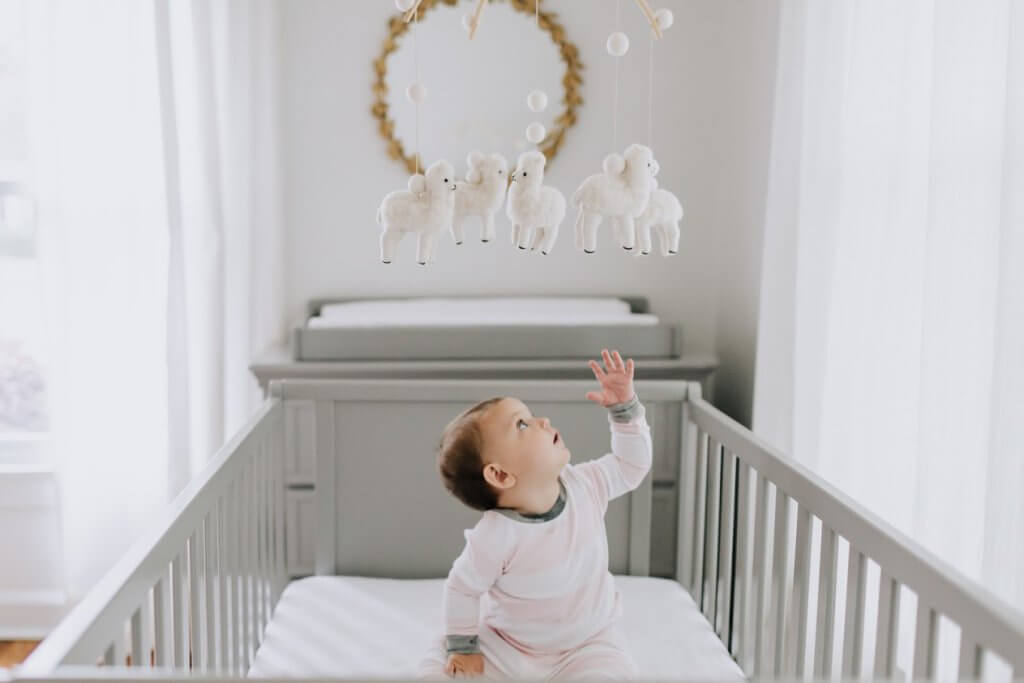
The American Academy of Pediatrics (AAP) has insightful recommendations to reduce the risk of sudden infant death syndrome (SIDS):
- Babies should ALWAYS sleep on their backs until their first birthday. This helps avoid sudden infant death syndrome (SIDS). They use the term “back to sleep for every sleep.”
- Babies should sleep in the parents’ room for at least the first 6 months. This “decreases the risk of SIDS by as much as 50%.”
- Any form of breastfeeding is shown to be protective against SIDS.
- Offering a pacifier anytime your baby sleeps can help, even if they don’t always take it or it falls out.
- DO NOT use any form of heating pad or electric blanket, or over-bundle your baby so they overheat.
- Keep mobiles out of reach, as they’re for visual stimulation only.
- Change the direction your baby sleeps in daily so they’re always looking in different directions. This helps avoid plagiocephaly, or flat-head syndrome.
We hope this guide was helpful to inform you on the kinds of cribs and which one is best for your baby. For more information on upcoming baby content, feel free to subscribe to our blog or leave us a comment on what you’d like us to discuss next!





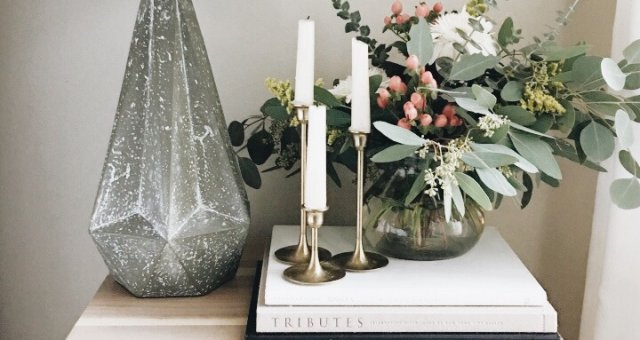
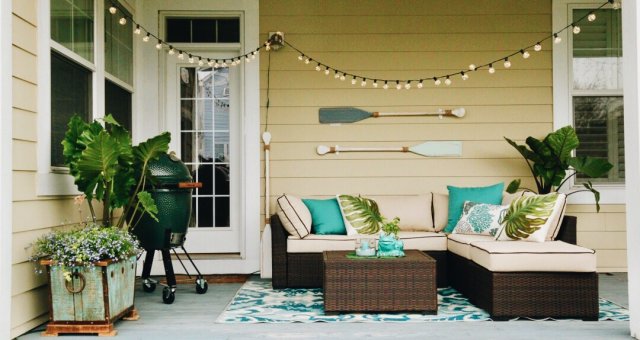
I didn’t know that a good way to prevent disaster with your baby while they sleep is to have them sleep in their parents’ room for their first six months. My wife is due to have our baby next month, and I need to get a crib for her to sleep in once she is born. Once I choose which crib to get, I will be sure to put it in our room.